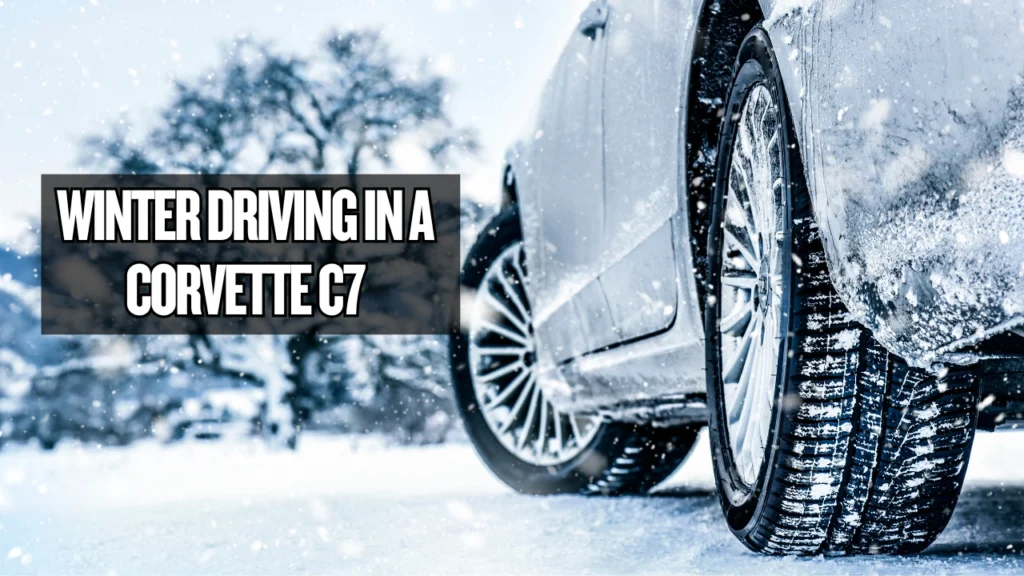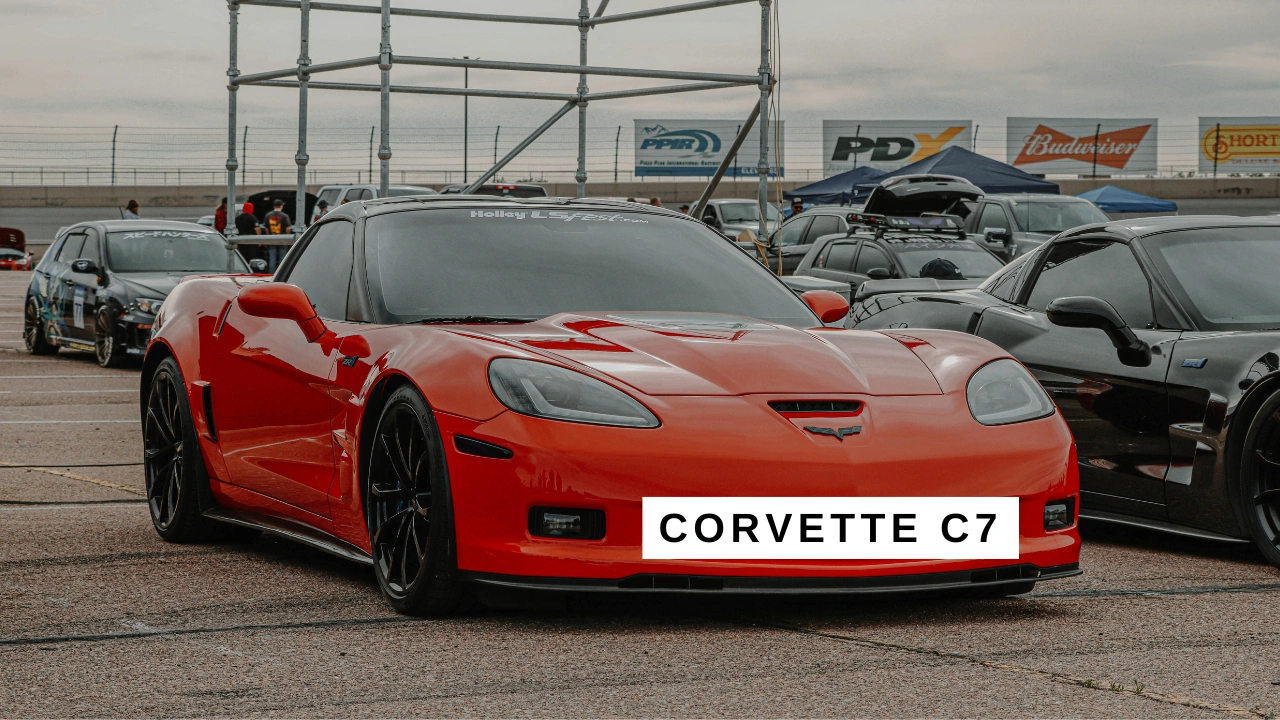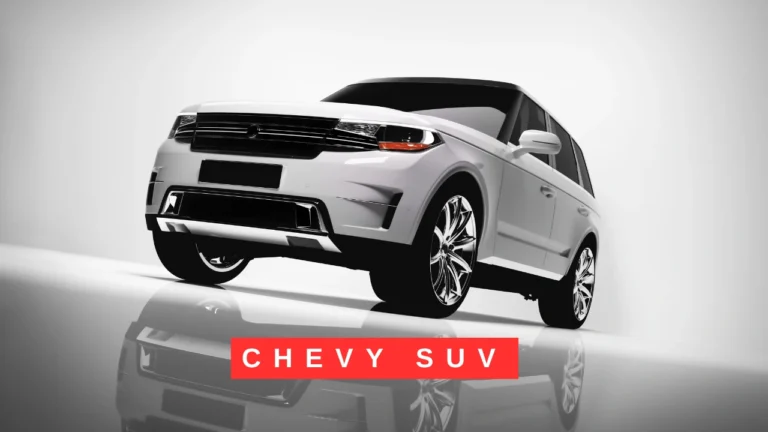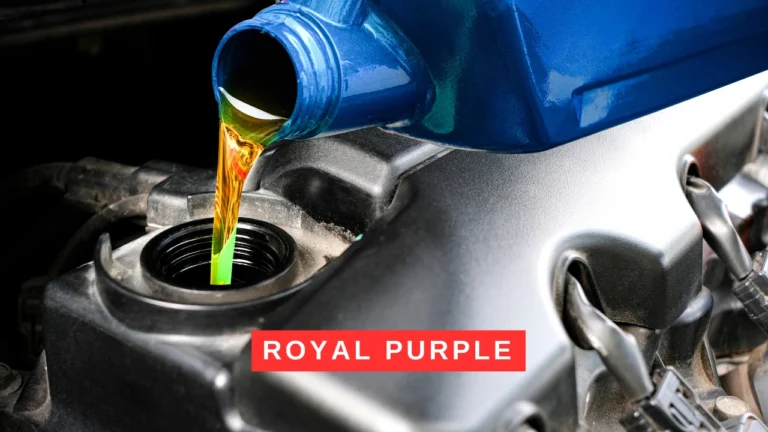Corvette C7: Ultimate Guide to Specs, Performance & Features
The Corvette C7 marked a turning point for Chevrolet’s legendary sports car. Produced from 2014 to 2019, it was the last front-engine Corvette before the revolutionary C8 mid-engine design. With its aggressive styling, powerful performance, and advanced technology, the C7 remains one of the most iconic American muscle cars of its time.
What is Corvette C7?
The Corvette C7 is the seventh generation of Chevrolet’s legendary sports car, produced from 2014 to 2019. It was the last front-engine, rear-wheel-drive Corvette, making it a historic model before the shift to a mid-engine layout. With its bold design, advanced aerodynamics, and high-performance V8 engines, the C7 remains a fan favorite among car enthusiasts.
The C7 Corvette introduced cutting-edge technology, including a lightweight aluminum chassis and an improved suspension system. It offered multiple performance variants, including the Stingray, Grand Sport, Z06, and ZR1, each delivering exceptional speed and handling. Combining supercar-level performance with daily drivability, the Corvette C7 is still regarded as one of the best American sports cars ever made.
A Brief History of the Corvette C7
Chevrolet unveiled the Corvette C7 Stingray at the 2013 Detroit Auto Show. The goal was clear: improve aerodynamics, refine handling, and boost power while keeping the Corvette’s affordability intact. The C7 introduced a lightweight aluminum frame, making it stiffer and more responsive than its predecessor, the C6.
The introduction of Direct Injection, Variable Valve Timing, and Active Fuel Management made the C7 more efficient without sacrificing power. By the time Chevrolet discontinued the model in 2019, the Corvette had firmly established itself as a world-class sports car.
Corvette C7 Engine and Performance
At the heart of the Corvette C7 is the LT1 6.2L V8 engine, producing 455 horsepower and 460 lb-ft of torque. When equipped with the performance exhaust, power jumps to 460 hp. The standard C7 can accelerate from 0-60 mph in just 3.8 seconds.
Chevrolet also introduced high-performance variants:
- C7 Z06: Powered by a supercharged LT4 6.2L V8, it delivers 650 hp and 650 lb-ft of torque. It can hit 0-60 mph in 2.95 seconds.
- C7 Grand Sport: Combines the naturally aspirated LT1 engine with the aggressive aerodynamics and handling of the Z06.
- C7 ZR1: The most powerful C7, featuring a 755-hp supercharged LT5 engine. It achieves a top speed of 212 mph.
| Model | Engine | Horsepower | Torque (lb-ft) | 0-60 mph |
|---|---|---|---|---|
| C7 Stingray | 6.2L LT1 V8 | 455-460 hp | 460 | 3.8 sec |
| C7 Grand Sport | 6.2L LT1 V8 | 460 hp | 465 | 3.6 sec |
| C7 Z06 | Supercharged 6.2L LT4 V8 | 650 hp | 650 | 2.95 sec |
| C7 ZR1 | Supercharged 6.2L LT5 V8 | 755 hp | 715 | 2.85 sec |
The C7 introduced a 7-speed manual transmission, a rare feature in modern sports cars. The 8-speed automatic offered lightning-fast shifts for those who preferred an automatic transmission.
Corvette C7 Design and Aerodynamics
The Corvette C7’s exterior design took inspiration from race cars, with a sculpted body built for aerodynamics. The wider stance, aggressive hood vents, and functional air ducts improved cooling and stability at high speeds.
Chevrolet also revamped the interior, focusing on driver engagement. Unlike previous models with lower-quality plastics, the C7 featured premium materials like leather, carbon fiber, and aluminum. The cockpit-style dashboard made the driver feel in control, with an intuitive infotainment system.
The removable Targa roof remained a fan-favorite, giving drivers the option of open-air cruising.
Handling and Driving Experience
The C7 Corvette was not just about straight-line speed. Thanks to Magnetic Ride Control, performance tires, and an electronic limited-slip differential, it handled corners with precision.
The Drive Mode Selector let drivers choose between different settings:
- Tour – Comfortable for daily driving.
- Sport – Sharper steering and throttle response.
- Track – Maximum performance for racing.
- Eco – Fuel-efficient mode with cylinder deactivation.
The Grand Sport and Z06 models featured wider tires, improved aerodynamics, and track-ready suspensions, making them even more capable on a race track.
Technology and Infotainment
The C7 came packed with technology, making it not just a fast car, but a smart one too. The Chevrolet MyLink system with an 8-inch touchscreen supported Apple CarPlay and Android Auto. The Performance Data Recorder (PDR) let drivers capture video footage of their drives, complete with telemetry data.
Other advanced features included:
- Heads-Up Display (HUD)
- Bose Premium Audio System
- Advanced Traction Control and Stability Systems
- Front and Rear Cameras for Parking Assistance
Fuel Efficiency and Practicality
While sports cars aren’t known for fuel efficiency, the Corvette C7 was surprisingly efficient. The Active Fuel Management system deactivated four cylinders under light loads, helping the C7 achieve up to 29 MPG on the highway.
For a car that could outrun Ferraris and Porsches, this level of efficiency made the C7 an excellent option for those wanting power without excessive fuel costs.
Corvette C7 Price and Market Value
The Corvette C7 initially started at around $55,000 for the base Stingray and went up to over $120,000 for the ZR1. Today, the C7 remains in high demand among enthusiasts, with used models retaining strong resale value.
| Model | Original MSRP | Current Market Value (Used) |
|---|---|---|
| C7 Stingray | $55,000+ | $40,000 – $60,000 |
| C7 Z06 | $79,000+ | $60,000 – $90,000 |
| C7 ZR1 | $120,000+ | $130,000 – $160,000 |
Prices vary based on mileage, condition, and trim level. The Z06 and ZR1 models tend to hold their value exceptionally well due to their high-performance capabilities.
Winter Driving in a Corvette C7: Can You Use It as a Daily Driver?

The Corvette C7 is a high-performance sports car designed for speed and handling, but winter driving presents challenges. Its rear-wheel-drive system and wide performance tires make it less ideal for snowy or icy roads. However, with the right winter tires and careful driving, it can still be used as a daily driver in colder climates.
Cold temperatures affect the Corvette C7’s traction, braking, and ground clearance, making snow-covered roads tricky. Features like traction control and stability systems help, but they can’t replace proper winter preparation. If you plan to drive it year-round, investing in snow tires, all-weather mats, and extra caution is essential for safer winter performance.
Is the Corvette C7 Still Worth Buying?
If you’re looking for a high-performance sports car at a relatively affordable price, the Corvette C7 is an excellent choice. It offers supercar-level speed, stunning design, and a thrilling driving experience.
Enthusiasts love the manual transmission option, which is becoming rare in modern performance cars. Additionally, the C7’s naturally aspirated V8 ensures a raw and engaging driving experience, something missing in many turbocharged rivals.
Conclusion
The Corvette C7 represents the pinnacle of front-engine Corvette engineering. With its powerful V8, aggressive design, advanced technology, and track-ready performance, it continues to be a sought-after sports car.
Whether you’re a collector, weekend racer, or daily driver, the C7 delivers an unmatched blend of performance and value. If you’re considering a high-performance, American-made supercar, the Corvette C7 should be at the top of your list.







